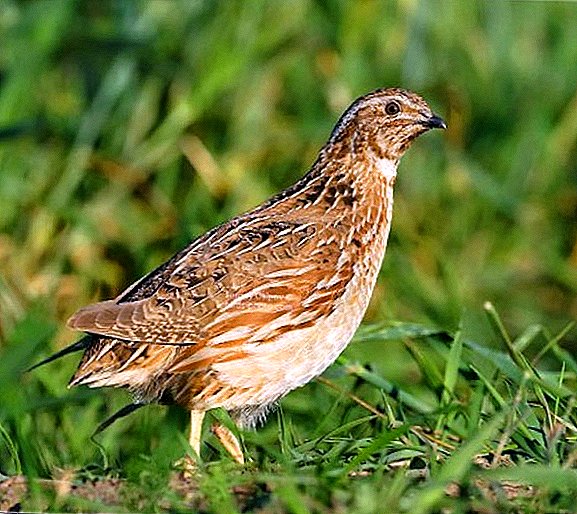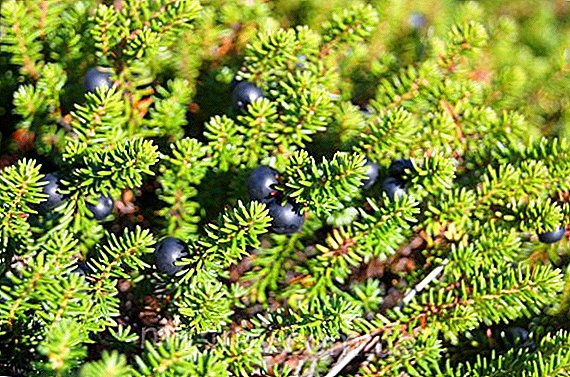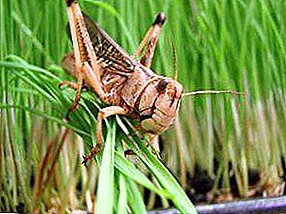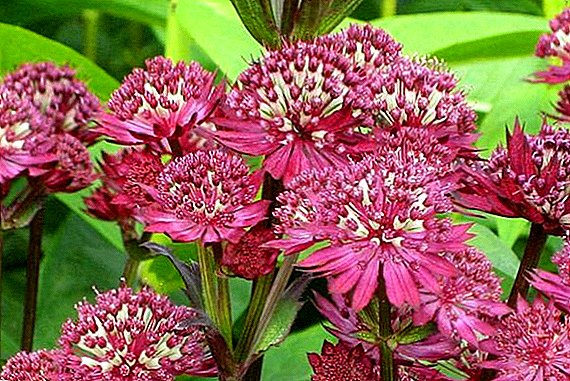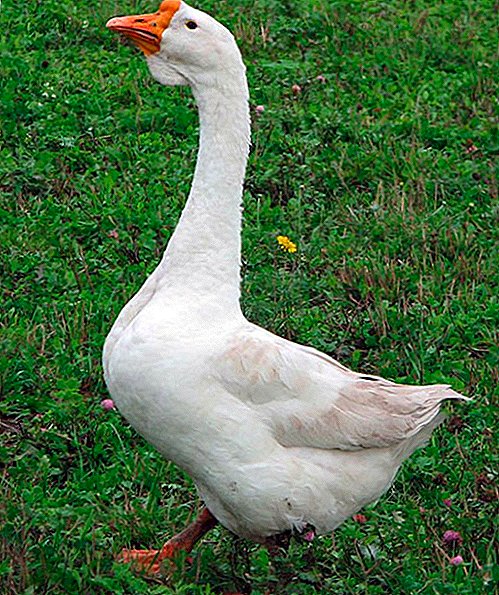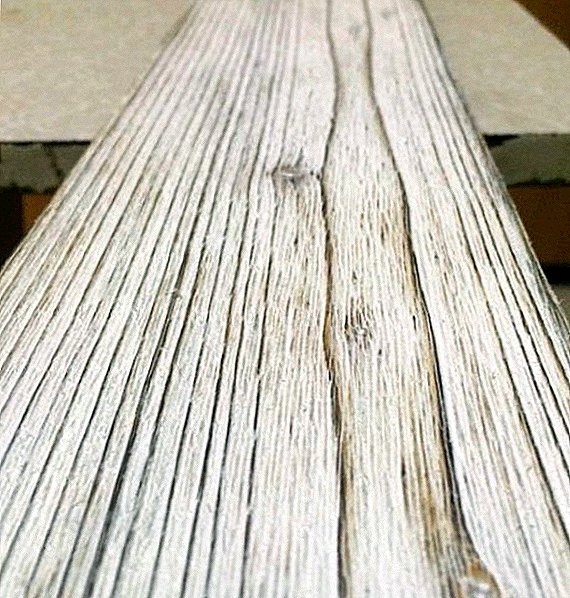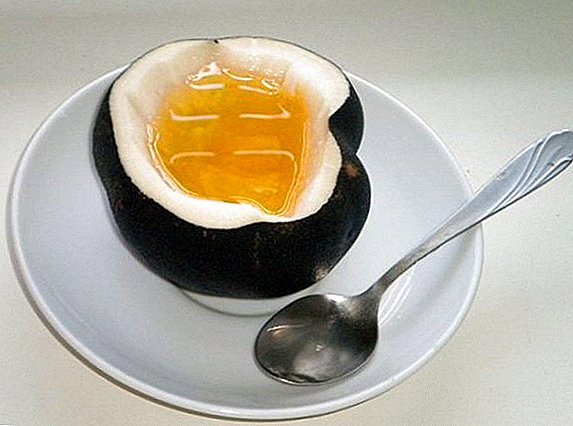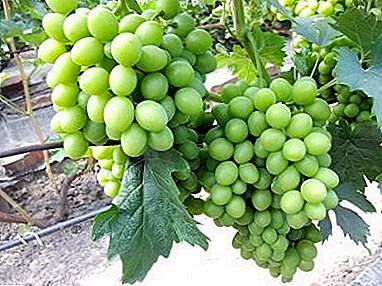
Recently among gardeners the number of those who are engaged in the cultivation of grapes in their backyard has been steadily growing.
Today, high-yielding, winter-hardy and incredibly delicious varieties of this plant have been bred, and one of the pearls of the modern collection of winegrowers is Monarch, also known as Pavlovsky, in honor of its creator.
What kind is it?
 This variety belongs to white dining grape varieties intended for direct fresh consumption. At the same time, it is distinguished by its thin, delicate skin, which is hardly felt when eating the juicy and fragrant flesh.
This variety belongs to white dining grape varieties intended for direct fresh consumption. At the same time, it is distinguished by its thin, delicate skin, which is hardly felt when eating the juicy and fragrant flesh.
The white varieties also include Lancelot, Bianca, Delight White.
In addition, this grape allows you to get great table wines with a pleasant tartness, filled with fruit and berry and woody notes in taste and smell.
Monarch grapes: description of the variety
- Vine.
- Bunches.
- Berries.
Monarch grapes are vigorous plant reaching height 250 - 300 cm and seated with short vegetative shoots up to 120 - 135 cm long.
Young shoots are hung with massive and elegant clusters of conical or cylindrical conical shape, medium friability, weight from 0,5 before 1 kg, no tendency to pea.
The berries are very large, oval or ovoid, measuring 36x26 mm, weighing up to 15 - 19 gr., but some of them reach and 32 gr. Their color is green first, but as it ripens it becomes amber-yellow, sometimes with reddish patches from the side of direct sunlight. Little seeds - only 2-3 pieces.
A photo
The appearance and characteristics of Monarch grapes can be assessed in the photo below:






Breeding history and breeding region
 He owes his appearance to a talented amateur breeder. E.G. Pavlovsky from the Krasnodar Territory, which in the middle of the last century conducted experiments on the breeding of new varieties of high-yielding and cold-resistant grape varieties.
He owes his appearance to a talented amateur breeder. E.G. Pavlovsky from the Krasnodar Territory, which in the middle of the last century conducted experiments on the breeding of new varieties of high-yielding and cold-resistant grape varieties.
The process of obtaining the "Monarch" consisted of two stages. At first, the Cardinal variety was artificially pollinated with a mixture of pollen from several other grape varieties. Then the result of the obtained crossing was treated with Talisman variety pollen (Kesha).
E.G. Pavlovsky He is the author of more than fifty species of hybrid forms of grapes, such as the King, Ayut Pavlovsky, Super Extra. For his work, he mastered all the existing methods of green vaccinations for growing large bushes and for small grafted seedlings.At the moment, Evgeny Pavlovsky is developing new promising forms. Under the order grows more than two thousand grapes. His works are known not only in Russia and the CIS countries, but also abroad.
Specifications
The variety "Monarch" is distinguished by a number of the most important positive qualities, thanks to which it has received special recognition among winegrowers.
Benefits
- High survival rate as when rooting shoots, and when grafting on the stock.
- Frost resistance.. The plant, properly sheltered for the winter, can withstand a drop in temperature to - 23-25 ºС.
- Excellent taste. Juicy, tender and sweet flesh with a delicate aroma of muscat will not leave anyone indifferent.
- High yield. Due to the large berries of the same size and sufficiently dense cluster, in good years you can get more than 7 kg grapes.
- Excellent immunity to the main grape diseases and pests, including mildew, gray rot and oidium.
- Short ripening time.
Monarch grapes belong to the hybrid grape varieties with an early average ripening period: no more than 130 days pass from the setting of buds to the full ripening of berries. Moreover, if in the south of our country the sweet fruit dessert has ripened already in the first decade of August, then in the middle lane it happens in the middle of September.
- Excellent transportability. The ripened grapes are very strong, the berries adhere perfectly to the brush and withstand transportation without any problems, without losing the presentation.
The varieties with early-term ripening also include: Buffalo, Lancelot and Pharaoh.
disadvantages
Perhaps the only drawback is to recognize shedding the ovaries.
Diseases and pests
 Despite the high resistance to the vast majority of diseases characteristic of grapes, there are isolated cases of the following troubles.
Despite the high resistance to the vast majority of diseases characteristic of grapes, there are isolated cases of the following troubles.
- Anthracnose.
The cause of this disease is fungus. Gloeosporium ampellinum. Sacc. First of all, it affects the leaves, on which light gray spots appear, increasing in size and leading to perforation of leaf blades.
The vine itself may be damaged: first, brownish spots form on it, which eventually penetrate deep into the central part of the stem. Gradually, the lesions acquire a dark coffee shade with a purple cushion along the periphery, often resulting in wicked vine.
In the far advanced stage of the disease, the berries are also affected, which are deformed, the integrity of their skin is broken, torn pits appear, exposing the seeds.
Note! In order to prevent the possibility of the development of such a dangerous disease, its prevention should be carried out at the vegetation stage.As a preventive measure, good results are shown by drugs such as Bordeaux Liquid, "Horus" and "Ridomil".
Fungicidal treatment is carried out in the morning and evening with no wind. Also, do not allow the ingress of solutions on nearby garden crops.
If the disease does happen, then microbiological agents can be used with high efficiency, in particular "Mikosan" and "Gaupsin"which simultaneously have a positive effect on the growth of the vine. Also useful and copper-containing drugs: "Cartocide", "Abiga Peak" and "Poliram". The treatment is carried out upon reaching the young shoots of 10–15 cm length.
- Phylloxera.
The causative agent of this disease is a small greenish-yellow aphid, barely noticeable by visual inspection. There is a root and leaf (gallic) form.
To combat the former, various fumigants are used, although this method has not been used recently, since it causes the destruction of the bush.
Note! As a natural way of dealing with phylloxera in the cultivation of grapes use sandy soils that aphids do not like. On such soils, all European grape varieties grow beautifully, even if the plants are cultivated in the center of the spread of this parasite.For the eradication of the leaf form, spray the above-ground part of the plant "Aktellikom", Zolon, "Confidor", Mitacom and other insecticidal drugs, which are used according to the instructions. Processing is usually carried out three times: the first time when 1 - 2 leaflets appear on the shoots, the second - if there are 12 - 14, and the third - with 18 - 22 leaves.
- Birds.
During the ripening of the clusters of plants, birds often become visitors to the vineyard to feast on juicy berries. To protect against birds, various bright and shiny scare items are hung out: tapes from a cassette recorder, CDs, brightly colored toys, especially with a light-reflecting effect, but over time their effectiveness decreases.
A more reliable way is mechanical, implying the isolation of the grape brushes with polypropylene nets with a small cell. Recently, sound scarers have come into fashion, for example, "Kite-8" and VK-20.

As for such common grape diseases as chlorosis, bacteriosis, rubella and bacterial cancer, you can read in the individual materials of our site.
High gastronomic qualities, resistance to pests and diseases, frost resistance and a simplified agricultural cultivation made the Monarch variety desirable in the garden of every amateur grower.
To the frost-resistant varieties also include Super Extra, Arched and Beauty of the North.


